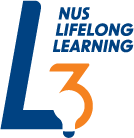Objectives
Knowledge and Insight (Understanding)
- Spectrum of play and sport-related injuries, and red flags of non-accidental injuries
- Fever patterns in children
- Prescription patterns and antibiotic susceptibilities
- Recognize urogenital, gastroenterology and hepatobiliary complaints and identify red flags (including vulvovaginitis, haematuria, dysuria, jaundice and per rectal bleeding)
- Recognize haematological presentations and identify red flags (including pallor and bleeding tendencies)
- Recognize Ear, Nose & Throat (ENT) issues and make timely specialist referrals where necessary (including foreign body, epistaxis and ear discharge)
- Recognize common orthopedic issues e.g. pes planus, genu valgus, patella instability, pulled elbow and make timely specialist referrals where necessary
- Approach to fevers, including Kawasaki disease
- Approach to lymph node swellings
- Manage common childhood infections (including urinary tract infection and gastroenteritis)
- Manage chronic asthma and asthma exacerbation
- Approach to acute respiratory distress, including croup, bronchiolitis, bronchitis, viral-induced wheeze and pneumonia
- Manage emergencies, stabilize and provide timely specialist referral for conditions including anaphylaxis, shock and seizures.
- Approach to headaches, giddiness and palpitations
- Counsel on seizure and anaphylaxis first aid
- Communicate referral plans for acute conditions requiring specialist and emergency referrals


